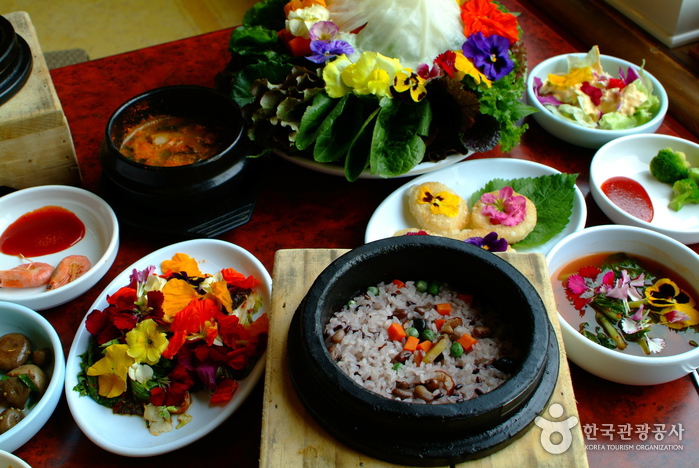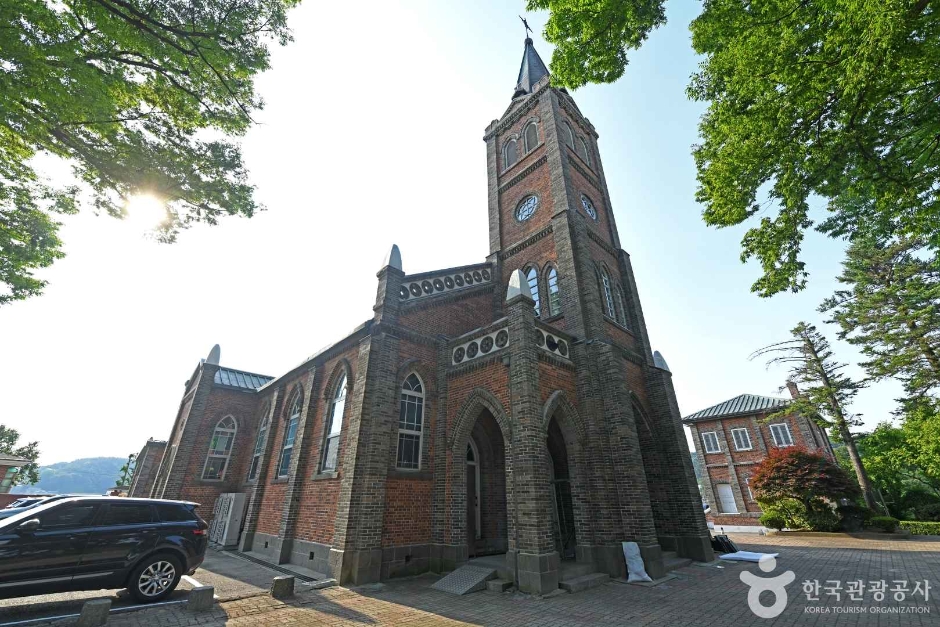Gomanaru 1999 (고마나루1999)
19.5Km 2024-02-28
5-8 Baengmigoeul-gil, Gongju-si, Chungcheongnam-do
+82-41-857-9999
Gomanaru 1999 is a Korean restaurant located near Gongsanseong Fortress. Their menu features a single set meal called gomanaru bapsang (rice and side dishes), which includes a hearty spread of pot rice, boiled pork slices, grilled marinated pork shoulder, and grilled dried pollack. Using rice from Gongju, the rice is flavorful and nourishing, complemented by fresh vegetables from Jirisan Mountain, making for a healthy meal. Rice is considered a staple in Korean cuisine, and Jirisan Mountain is renowned as a pristine region, making the food here particularly special.
Gongju Jungdong Catholic Church (공주 중동성당)
19.6Km 2025-02-04
6 Seongdang-gil, Gongju-si, Chungcheongnam-do
Jungdong Catholic Church, the first of its kind in the Gongju, was constructed in 1897 in the Western medieval Gothic style. The church features a cruciform layout with a red brick exterior. A tall bell tower crowns the central entrance, while pointed arches adorn the upper parts of the doorways and windows. Inside, the simple decorations and stained glass windows create a serene and graceful ambiance.
Nonsan Jijangjeongsa Temple (지장정사(논산))
19.8Km 2021-08-17
103, Hwagogan-gil, Nonsan-si, Chungcheongnam-do
+82-41-732-5629
Upon finishing his thousand-day prayers in Gyeryongsan Mountain in June 1980, Monk Deoksan came down to the site of an old temple in Noseong-myeon, Hwagok-ri and built Jijangjeongsa Temple. The upper part of the current Daeungjeon Hall was once the main hall of Jijangam Hermitage and was originally about 33 square meters. Daeungjeon Hall was later expanded to its current size. In 1995, Yeongsanjeon (Cheonbuljeon) Hall was built and in 1997, Seonjae Preschool was opened. The temple is open for praying and meditation and also has a charnel house. The temple and its followers are loyally devoted to the practice of Buddhism in its purest form.
Gongju Gongsanseong Fortress [UNESCO World Heritage] (공주 공산성 [유네스코 세계문화유산])
19.8Km 2024-03-15
280 Ungjin-ro, Gongju-si, Chungcheongnam-do
+82-41-856-7700
Gongsanseong Fortress is a fortification situated at the heart of Gongju, which served as the capital of the ancient Baekje kingdom (18 BCE - 660 CE) from 475 to 538. Even after Baekje's fall, subsequent dynasties such as Silla (57 BCE - 935 CE), Goryeo (918-1392), and Joseon (1392-1897) continued to use Gongju as a regional administrative center. As a result, numerous historical sites have accumulated in the area over time. From the fortress, visitors can enjoy a panoramic view of Gongju’s city center and the Geumgang River.



![Gongju Gongsanseong Fortress [UNESCO World Heritage] (공주 공산성 [유네스코 세계문화유산])](http://tong.visitkorea.or.kr/cms/resource/75/2678675_image2_1.jpg)
 English
English
 한국어
한국어 日本語
日本語 中文(简体)
中文(简体) Deutsch
Deutsch Français
Français Español
Español Русский
Русский